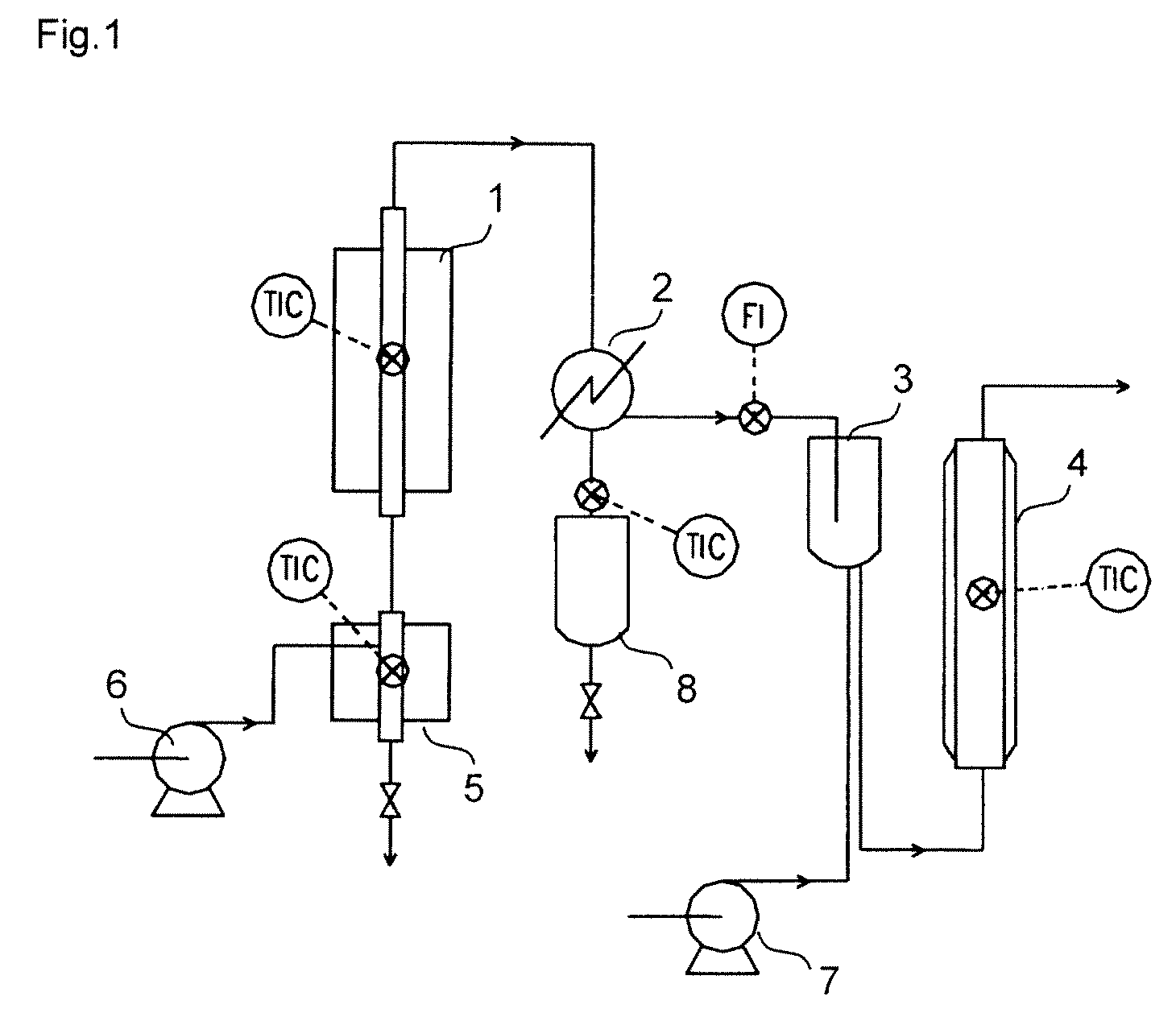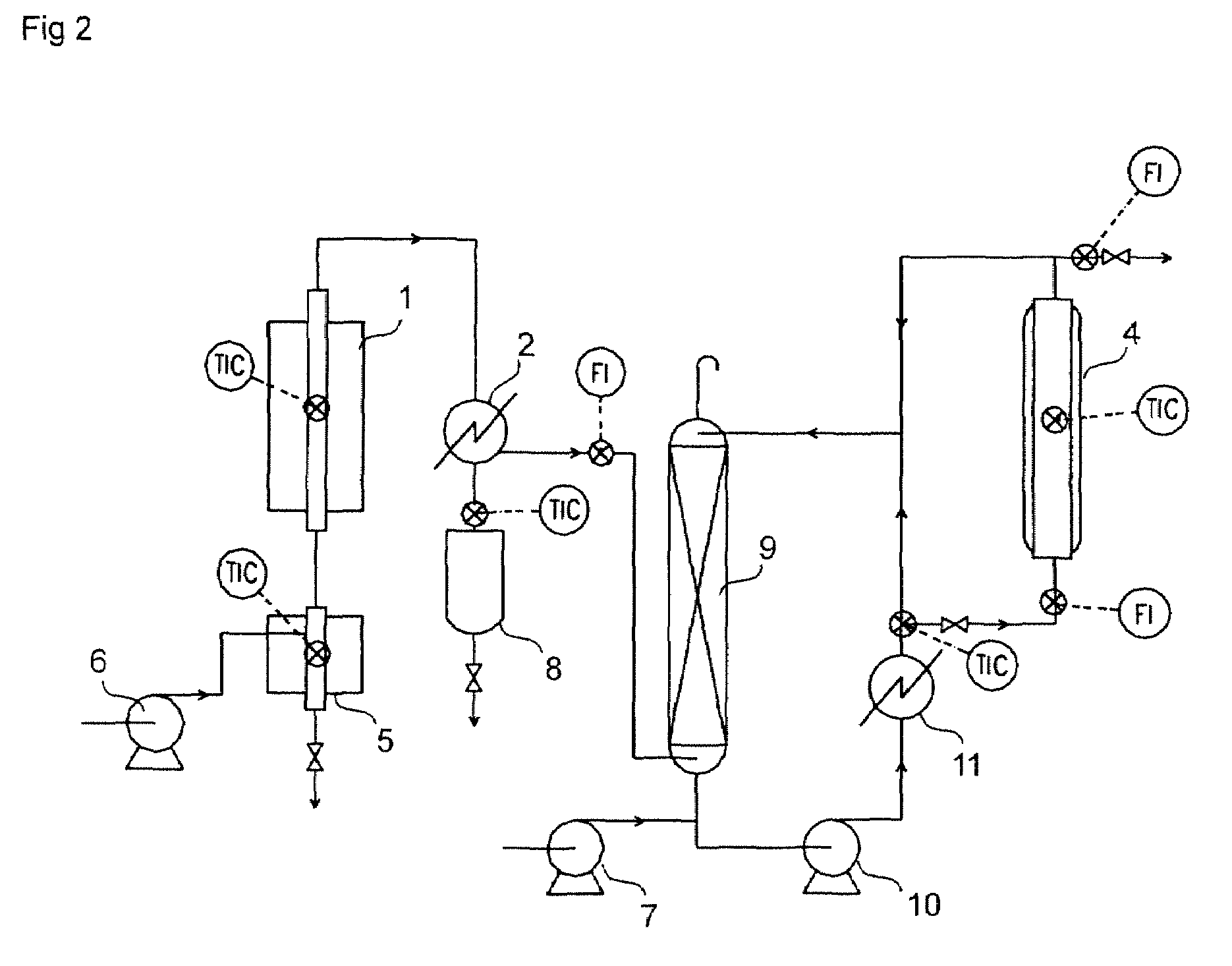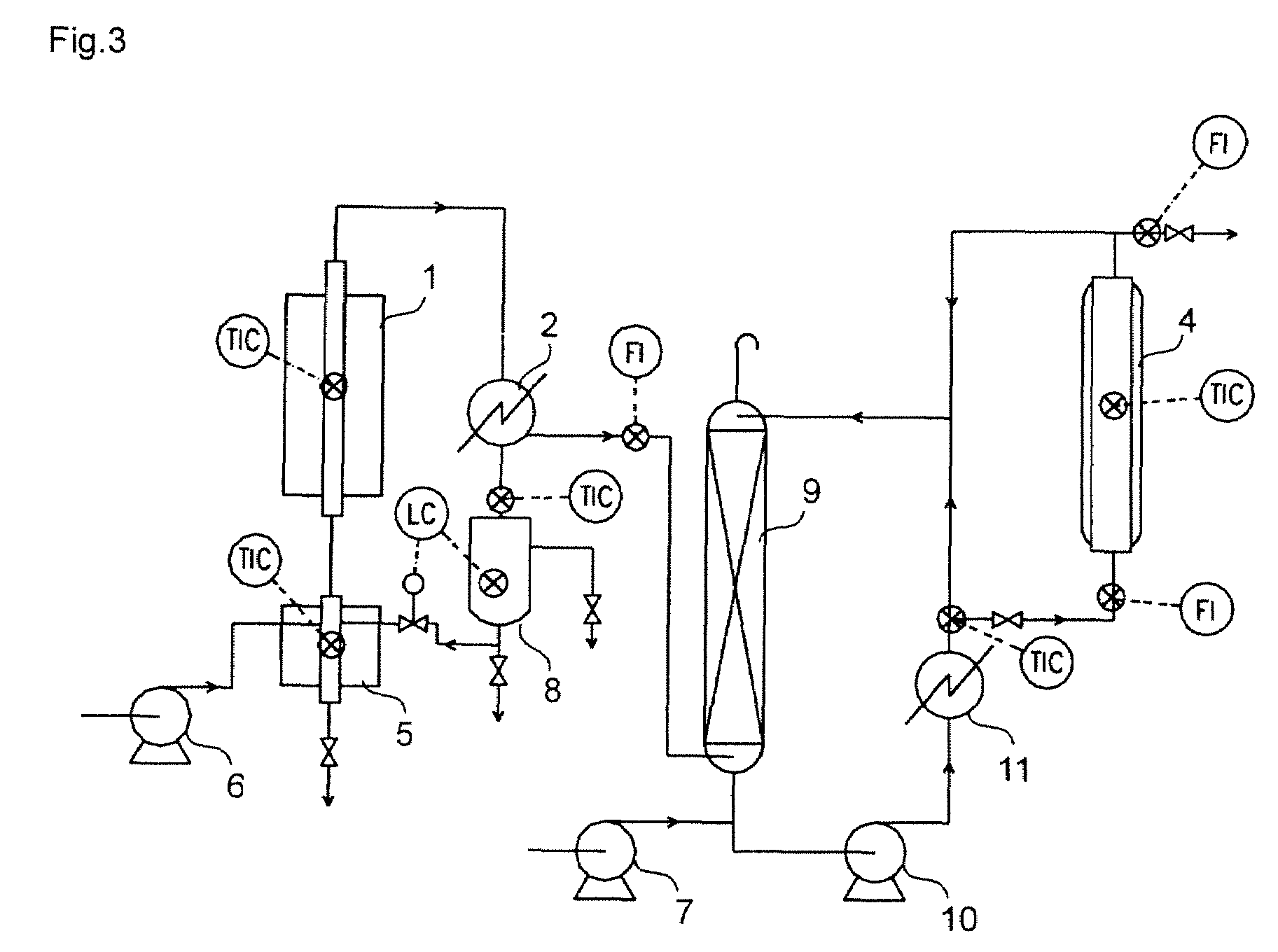Method for synthesizing t-butyl (meth)Acrylate
a technology of tbutyl (meth)acrylate and acrylate, which is applied in the preparation of carboxylic acid esters, chemistry apparatus and processes, and organic chemistry, etc., can solve the problems of unfavorable method in view of raw material cost, inability to synthesize t-butyl (meth)acrylate, and inability to form t-butyl ester, etc., to achieve the effect of reducing raw material cost and inability to synth
- Summary
- Abstract
- Description
- Claims
- Application Information
AI Technical Summary
Benefits of technology
Problems solved by technology
Method used
Image
Examples
example 1
[0079]FIG. 1 shows a flow diagram of an example of equipment that can carry out the method of the present invention.
[0080]A molded silica-alumina catalyst N631HN (trade name; manufactured by Nikki Chemical Co., Ltd.; 5 mm in diameter×5 mm in length) on sale was packed in a stainless steel tube having an inside diameter of 13 mm and a length of 115 mm, to obtain reaction tube 1. To evaporator 5, 86.5% by mass ratio of t-butyl alcohol aqueous solution was supplied at a rate of 0.196 g / min using t-butyl alcohol aqueous solution supply pump 6, all of which was evaporated and passed through the reaction tube 1, and a dehydration decomposition reaction was continuously performed at 160° C. When the reaction was presumed to have reached a steady state, reaction gas was sampled and analyzed with gas chromatography to obtain results of a conversion of 93.7% based on t-butyl alcohol and an isobutylene yield of 85.8%.
[0081]A produced gas of the dehydration decomposition reaction was introduced...
example 2
[0085]As a substitution of the isobutylene-dissolving tank 3 used in Example 1, absorption column 9 which was equivalent to number of theoretical plates of 5 and open to atmosphere was provided. FIG. 2 shows a flow diagram of a test apparatus.
[0086]The same procedures of a dehydration decomposition reaction and a separation of condensed components as in Example 1 were performed and crude isobutylene was obtained.
[0087]Crude isobutylene gas was supplied to the bottom of the absorption column 9. Methacrylic acid, temperature of which was 18° C., was supplied to a line located downstream of the bottom of the absorption column 9 at a rate of 0.17 g / min and a bottom liquid of the absorption column 9 and methacrylic acid were mixed. The resultant mixed liquid, freezing point of which was lowered as compared with methacrylic acid owing to dissolution of isobutylene (the freezing point of methacrylic acid being about 15° C.), was passed through heat exchanger 11 using circulation pump 10 an...
example 3
[0090]Using equipment shown in FIG. 2, recycling from the jacketed glass column 4 to the top of the absorption column 9 was performed in addition to the same operations as in Example 2.
[0091]Recycling from the bottom of the absorption column 9 to the top of the absorption column 9 without passing the jacketed glass column 4 was performed at a rate of 1.60 g / min, and recycling from the outlet of the jacketed glass column 4 to the top of the absorption column 9 was performed at a rate of 0.16 g / min. The other conditions were the same as in Example 2.
[0092]As a result, a rate of isobutylene dissolution in the absorption column 9 was 56.34% (unabsorbed isobutylene in the absorption column 9 being lost from a vent of the absorption column 9) and an yield of t-butyl (meth)acrylate was 21.48% based on t-butyl alcohol supplied.
PUM
| Property | Measurement | Unit |
|---|---|---|
| length | aaaaa | aaaaa |
| diameter | aaaaa | aaaaa |
| diameter | aaaaa | aaaaa |
Abstract
Description
Claims
Application Information
 Login to View More
Login to View More - R&D
- Intellectual Property
- Life Sciences
- Materials
- Tech Scout
- Unparalleled Data Quality
- Higher Quality Content
- 60% Fewer Hallucinations
Browse by: Latest US Patents, China's latest patents, Technical Efficacy Thesaurus, Application Domain, Technology Topic, Popular Technical Reports.
© 2025 PatSnap. All rights reserved.Legal|Privacy policy|Modern Slavery Act Transparency Statement|Sitemap|About US| Contact US: help@patsnap.com



